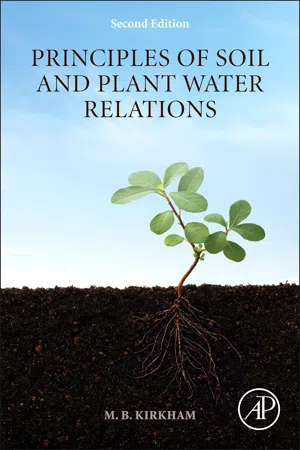
Principles of Soil and Plant Water Relations
M.B. Kirkham
- 598 páginas
- English
- ePUB (apto para móviles)
- Disponible en iOS y Android
Principles of Soil and Plant Water Relations
M.B. Kirkham
Información del libro
Principles of Soil and Plant Water Relations, 2e describes the principles of water relations within soils, followed by the uptake of water and its subsequent movement throughout and from the plant body. This is presented as a progressive series of physical and biological interrelations, even though each topic is treated in detail on its own. The book also describes equipment used to measure water in the soil-plant-atmosphere system. At the end of each chapter is a biography of a scientist whose principles are discussed in the chapter. In addition to new information on the concept of celestial time, this new edition also includes new chapters on methods to determine sap flow in plants dual-probe heat-pulse technique to monitor water in the root zone.
- Provides the necessary understanding to address advancing problems in water availability for meeting ecological requirements at local, regional and global scales
- Covers plant anatomy: an essential component to understanding soil and plant water relations